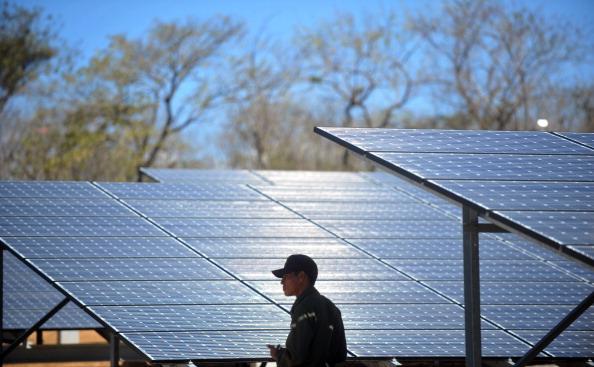A recently published research paper titled “Jointly-tuned plasmonic-excitonic photovoltaics using nanoshells,” by University of Toronto engineering professor Ted Sargent and his research group claims to have found a technique to increase the efficiency of solar cells. According to the paper published in the journal Nano Letters, the technique involves working with colloidal quantum dot photovoltaics in the solar cells.
These quantum dot photovoltaics were not very competent in capturing energy from solar infrared waves. Infrared makes up half of the sun’s energy that reaches Earth. Hence, harvesting this is essential for maximizing solar efficiency.
To achieve this, the research group introduced spectrally tuned, solution-processed plasmonic nano-particles. These particles are said to provide unprecedented control over light’s propagation and absorption.
“The new technique developed by Ted Sargent’s group shows a possible 35 per cent increase in the technology’s efficiency in the near-infrared spectral region,” states co-author Dr. Susanna Thon. “Overall, this could translate to an 11 per cent solar power conversion efficiency increase, making quantum dot photovoltaics even more attractive as an alternative to current solar cell technologies.”
“There are two advantages to colloidal quantum dots,” Thon says. “First, they’re much cheaper, so they reduce the cost of electricity generation measured in cost per watt of power. But the main advantage is that by simply changing the size of the quantum dot, you can change its light-absorption spectrum. Changing the size is very easy, and this size-tunability is a property shared by plasmonic materials: by changing the size of the plasmonic particles, we were able to overlap the absorption and scattering spectra of these two key classes of nano-materials.”
The group achieved increased efficiency through embedding gold nano-shells. Since gold is not an economical metal, they are looking at other cheaper alternatives.
More work needs to be done, Thon adds. “We want to achieve more optimization, and we’re also interested in looking at cheaper metals to build a better cell. We'd also like to better target where photons are absorbed in the cell -- this is important photovoltaics because you want to absorb as many photons as you can as close to the charge collecting electrode as you possibly can.”
The Epoch Times publishes in 35 countries and in 21 languages. Subscribe to our e-newsletter.





